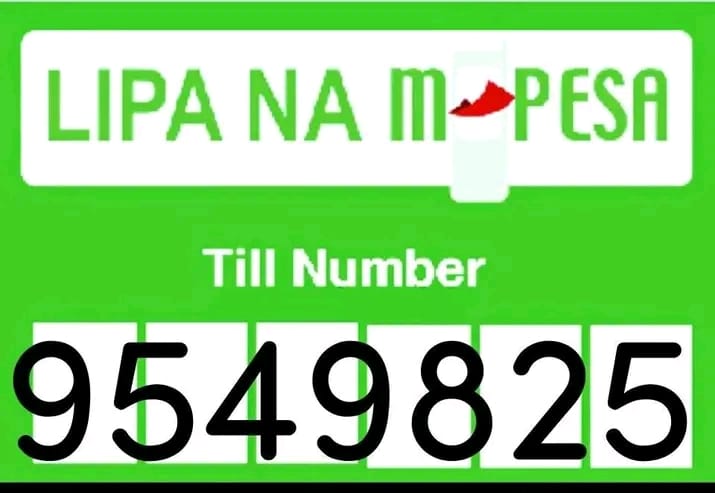
simply amazing, always for you.
Beneath the Hustle of the Nairobi Streets
If you’ve ever walked through Nairobi’s Central Business District on a weekday morning, you’ve likely seen it—rows of matatus (Kenya’s signature minivans) jockeying for space, touts yelling destinations, engines revving, horns blaring, passengers leaping in and out of half-moving vehicles. It feels chaotic, yet strangely rhythmic. To the untrained eye, this seems like nothing more than Nairobi’s buzzing commuter heartbeat.

But behind that hustle lies something far more sinister.
There is an unspoken order, enforced not by government or law, but by shadowy cartels, rogue police officers, organized criminal gangs, and corrupt sacco (Savings and Credit Cooperative) officials. Together, they make up what many call the Matatu Mafia—a ruthless and deeply entrenched network that controls Kenya’s public transport system, extorts billions, stifles reform, and leaves behind a trail of violence, fear, and death.
This is not just about transport. It’s about control, money, and a system so broken, fixing it has become a dangerous affair.
Chapter 1: Origins of the Matatu Culture
To understand the Matatu Mafia, we first need to understand the matatu itself.
The word matatu derives from the Kikuyu phrase mang’otore matatu, meaning “thirty cents,” which was the original fare back in the 1960s. These vans started as informal ride-sharing vehicles in Nairobi during a time when formal public transport was inefficient and inaccessible. Over time, their numbers grew, and they began to fill a critical gap in urban and rural mobility.
By the 1980s and 1990s, the matatu industry had become a booming business, largely unregulated, cash-heavy, and attractive to hustlers and investors alike. But with minimal oversight came a breeding ground for lawlessness. Gangs moved in, using violence to control lucrative routes. Police saw a goldmine of bribes. Sacco leaders began pocketing public funds. And slowly, the informal system hardened into a cartelized one.
Chapter 2: The Anatomy of the Cartels
At the heart of this underworld is a sophisticated, multilayered syndicate. A web of influence where money, violence, and politics intersect.
2.1. The Gangs
Groups like Mungiki, known for their brutal tactics, once dominated routes across Central Kenya and Nairobi. They would extort matatu drivers for protection fees, demand daily levies, and retaliate violently against those who resisted. In many cases, matatu owners were forced to pay between KSh 200–600 daily, just to operate in peace.

These gangs don’t merely collect money. They control which vehicles operate on certain routes. They decide who gets access to profitable stages. And they enforce compliance through beatings, vehicle vandalism, or worse—murder.
2.2. Police and County Askari
Traffic police are not innocent bystanders in this system. Many are deeply embedded in the cartel network, taking bribes in exchange for looking the other way on issues like vehicle compliance, speeding, and overloading. Some even receive daily “protection fees” directly from drivers.
A 2017 audit by Transparency International revealed that traffic police were among the most bribed government officials in Kenya. And the matatu sector, being a cash business, remains one of their largest sources of illicit income.
2.3. Sacco Officials and Political Brokers
Each matatu must belong to a sacco or transport company to operate legally. On paper, this was meant to organize the industry and make it easier to regulate. In reality, many saccos have turned into fiefdoms run by corrupt officials who demand kickbacks for route allocation, stage access, or membership registration.
Some saccos are deeply infiltrated by former gang members, or are operated as extensions of political mafias. These shadowy alliances ensure that only those who “play the game” succeed.
Chapter 3: Economics of Extortion
The numbers behind the Matatu Mafia are staggering.
According to investigations published by Nation Media Group and independent watchdogs, the total annual loss due to extortion, bribes, and unregulated fees in the sector is estimated at over KSh 50 billion (USD $350 million).
3.1. The Daily Burden
A single matatu may pay:
- KSh 200–600 daily to cartels or enforcers
- KSh 100–300 to rogue police officers
- KSh 50–100 at various stages to touts or minor extortionists
For a matatu operating seven days a week, this can amount to KSh 25,000–35,000 per month, which is more than what some drivers take home. Newcomers face additional hurdles like registration “fees” of up to KSh 100,000—unofficial, of course.
3.2. The Price of Resistance
Owners or drivers who resist paying are often met with swift retribution: their vehicles are vandalized, tires slashed, windows smashed, or they are ambushed and physically attacked. In some chilling cases, resistors have been found dead, with investigations going nowhere.
Chapter 4: The Matatu Worker’s Reality
For the average matatu driver or conductor (makanga), life is a daily gamble. Long hours, unpredictable income, harassment from police, demands from cartels, and constant fatigue make it one of the toughest urban jobs in Kenya.
Many drivers wake at 4 a.m. and work until 10 p.m., only to pocket a few hundred shillings after expenses and cartel payments. Some drivers rent vehicles from absentee owners, meaning they must remit a set amount daily—regardless of how much they earn.
And then there are the constant brushes with law enforcement, which often end in bribes, vehicle impoundments, or court appearances.
Chapter 5: The Culture of Violence and Intimidation
Violence is the cartel’s most effective tool.
In Nairobi alone, there have been dozens of documented incidents where matatu operators were physically attacked for refusing to pay extortion fees. In 2020, a matatu owner was shot dead in Eastlands after challenging a cartel’s control over a popular route. No arrests were made.
Witnesses are often too afraid to come forward. In some neighborhoods, the cartels are so feared they operate like mini-governments. They offer “justice,” settle disputes, and punish non-compliance—with no regard for legality or human rights.
The matatu mafia does not fear the law. In many cases, it is the law.
Chapter 6: Attempts at Reform—And Why They Keep Failing
Successive governments have tried to tame the matatu sector, with limited success.
6.1. Michuki Rules
In 2003, then-Transport Minister John Michuki introduced sweeping reforms: speed governors, seat belts, uniforms, and stricter licensing. It worked—for a while. The chaos reduced, and accidents fell. But after Michuki left office, enforcement waned, and the old habits returned.
6.2. NTSA Crackdowns
The National Transport and Safety Authority (NTSA) has launched several campaigns to formalize the industry, including digital fare systems and vehicle tracking. But each initiative has faced sabotage—from within and without.
Cartel leaders often bribe their way out of compliance. Police officers undermine reforms to protect their bribe pipelines. And political leaders are reluctant to act decisively, fearing backlash or lost votes.
Chapter 7: The Human Cost
This isn’t just about bribes and broken laws. It’s about real people—drivers forced to live in fear, passengers crammed into unsafe vehicles, families that lose breadwinners to accidents or gang violence.
It’s about a system where merit, hard work, and honesty are punished, while brutality, corruption, and criminality thrive.
Chapter 8: Hope on the Horizon?
Despite the overwhelming odds, there are glimmers of hope.
Young entrepreneurs are developing matatu-hailing apps to bypass corrupt intermediaries. Civil society groups are documenting cartel abuses and pushing for legal reform. Some counties are experimenting with Bus Rapid Transit (BRT) systems to reduce matatu dependency.
But the question remains: can technology, transparency, and willpower defeat a system built on blood and bribes?
A Nation Held Hostage
The matatu is more than a vehicle. It is a symbol of Kenya’s struggle between order and chaos, between rule of law and rule by gang. For decades, this essential transport system has been hijacked by cartels that care only about power and profit.
As passengers, we may grumble about fares or reckless driving. But few of us understand the web of extortion and fear behind every matatu ride.
Until Kenya finds the courage to dismantle the Matatu Mafia—for real—every daily commute will remain a silent battle for survival.
If your daily commute could speak, what stories would it tell—and would you dare to listen?
SUGGESTED READS
- Maina Njenga: Prophet, Cult Leader or Political Pawn?
- The Rise of Extrajudicial Killings in Kenya: Who Protects the Poor?
- Top 10 Most Notorious Gangs and Militia Groups in Africa
- The Mau Mau Rebellion: Kenya’s First War for Freedom
- The Coffin Thief of Nairobi: The True Story of John Kibera
- Shocking African Rituals That Still Exist Today

Support Our Website!
We appreciate your visit and hope you find our content valuable. If you’d like to support us further, please consider contributing through the TILL NUMBER: 9549825. Your support helps us keep delivering great content!
If you’d like to support Nabado from outside Kenya, we invite you to send your contributions through trusted third-party services such as Remitly, western union, SendWave, or WorldRemit. These platforms are reliable and convenient for international money transfers.
Please use the following details when sending your support:
Phone Number: +254701838999
Recipient Name: Peterson Getuma Okemwa
We sincerely appreciate your generosity and support. Thank you for being part of this journey!
